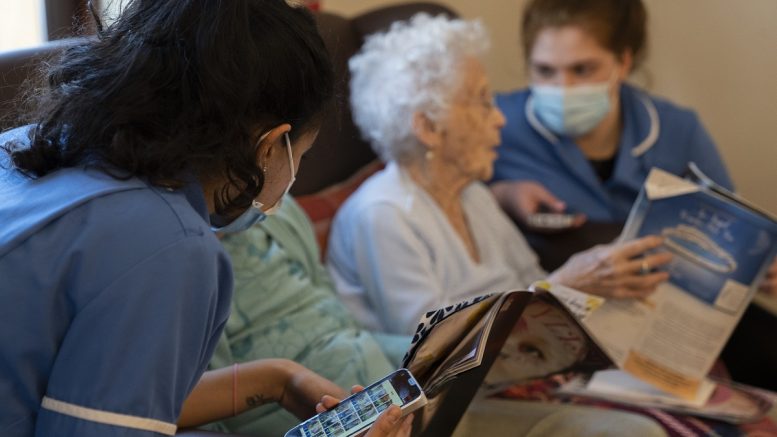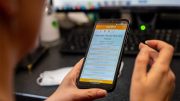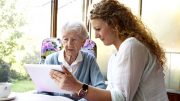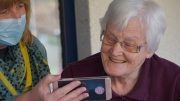With this week being UK Malnutrition Awareness Week (11th to 17th October), once again, we find a spotlight being cast over the fundamental need for older people in care to get the nutrients and hydration they require to live a healthy and happy life.
While awareness weeks like these are crucial in providing a greater understanding of the dangers, risk factors and signs of malnutrition and dehydration in social care, they should be at the forefront of care practices year-round.
According to the British Association for Parenteral and Enteral Nutrition (BAPEN), malnutrition is a significant public health problem that affects over 10 per cent of people over the age of 65 – roughly 1.3 million people. The BAPEN also suggests that around 35 per cent of residents admitted into UK care homes are at risk of malnutrition.
Age UK defines malnutrition and nutritional risks as being low bodyweight, unintended weight loss, or poor recent nutritional intake. Older people are more at risk due to factors including physiological changes, poor appetite, practical difficulties, poorer mental and oral health, and acute or chronic illness.
Unfortunately, malnutrition amongst care home residents is, all too often, a hidden problem of which the consequences can be severe. In the worst cases, older people can become extremely ill and admitted to hospital.
Thankfully, in recent years, we have increased awareness of the symptoms of malnutrition and dehydration and empowered caregivers to detect them through digital care technology.
With digital care plans in the palm of their hands, carers and nurses can immediately see which residents have not had sufficient nutrients or fluids and take appropriate action. The fluid offered to residents, and the amount of fluid drunk in millilitres, for instance, is quickly evidenced at the point of delivery. Reminders to offer drinks or specific food groups can be set up as part of a planned, person-centred care routine, with a traffic light system of flags alerting staff to when a care task is due, or to a resident falling below the recommended nutrition/hydration threshold for the rolling 24-hour period.
Digital care plans can also measure the malnutrition risk of an individual by monitoring any unplanned weight loss, which automatically updates their body mass index on the system.
So, when the risk increases, caregivers can be alerted and take appropriate action to avoid that person becoming malnourished or dehydrated. Any action taken, whether that be foods or fluids, is then pulled through to the system so everyone can instantaneously see the individual’s real-time nutrition and fluid charts.
Monitoring a person’s oral health is also an important factor in avoiding malnutrition. For instance, if a person’s mouth is injured, they will be less likely to eat and drink their normal daily intake as it could be an unpleasant experience for them. Through digital care technology, a caregiver can monitor and share sore or swallowing issues that contribute to how well someone can eat and drink. For example, someone with dysphagia may need to be put on a textured diet to ensure they get their required nutrients.
With all these risks to malnutrition, a score can be given which categorises an individual into low, medium, or high risk. This allows everyone with access to the care plans to instantly see who requires attention.
Again, it is all about being able to review someone’s needs by measuring all risk factors such as height, weight, age, allergies, medical conditions, etc. All data is pulled through the digital care management system, allowing caregivers to provide the appropriate level of person-centred care.
One UK care provider to benefit from digital care technology that allows you to monitor nutrition and hydration intake is Quality Reliable Care (QRC), who operate several specialised care services ranging from residential to supported accommodation services. Kevin May, QRC’s Registered Manager, said: “Our staff are very complimentary of the management of nutrition via digital care planning tools. They feel the technology covers all areas of nutrition and hydration, plus offers easy access to both food and fluid charts.
“Collectively, they feel all information related to nutrition and hydration can be monitored and is readily accessible, making it easy to share with others including district nurses, social workers, and other healthcare professionals.”
Overall, digital care technology allows care providers to get a full picture of an individual’s nutrition and hydration plan, which can be monitored and updated in real-time – something that just isn’t possible with paper-based or outdated digital systems. Ultimately, going forward, digital care plans will be the benchmark for providing a holistic approach to care that ensures people in social care have a significantly lower chance of dealing with malnutrition and dehydration.
About the author
Jonathan Papworth is the co-founder and director of Person Centred Software, a digital care technology pioneer. Founded in 2013 with the objective of helping to improve standards in social care, Person Centred Software has become an award-winning global company with over 2,500 care homes in the UK and Ireland alone using its digital care management system.





